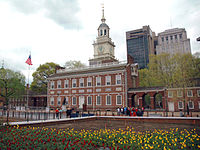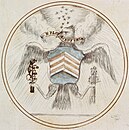
The Articles of Confederation and Perpetual Union was an agreement among the 13 states of the United States, formerly the Thirteen Colonies, that served as the nation's first frame of government. It was debated by the Second Continental Congress at Independence Hall in Philadelphia between July 1776 and November 1777, and finalized by the Congress on November 15, 1777. It came into force on March 1, 1781, after being ratified by all 13 colonial states. A guiding principle of the Articles was the establishment and preservation of the independence and sovereignty of the states. The Articles consciously established a weak federal government, affording it only those powers the former colonies had recognized as belonging to king and parliament. The document provided clearly written rules for how the states' league of friendship, known as the Perpetual Union, would be organized.

Richard Henry Lee was an American statesman and Founding Father from Virginia, best known for the June 1776 Lee Resolution, the motion in the Second Continental Congress calling for the colonies' independence from Great Britain leading to the United States Declaration of Independence, which he signed. Lee also served a one-year term as the president of the Continental Congress, proposed and was a signatory to the Continental Association, signed the Articles of Confederation, and was a United States Senator from Virginia from 1789 to 1792, serving part of that time as the second president pro tempore of the upper house.

The Continental Congress was a series of legislative bodies, with some executive function, for the Thirteen Colonies of Great Britain in North America, and the newly declared United States before, during, and after the American Revolutionary War. The Continental Congress refers to both the First and Second Congresses of 1774–1781 and at the time, also described the Congress of the Confederation of 1781–1789. The Confederation Congress operated as the first federal government until being replaced following ratification of the U.S. Constitution. Until 1785, the Congress met predominantly at what is today Independence Hall in Philadelphia, though it was relocated temporarily on several occasions during the Revolutionary War and the fall of Philadelphia.
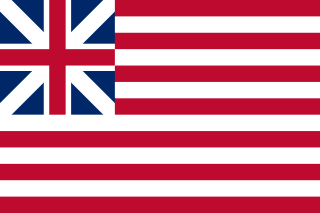
The history of the United States from 1776 to 1789 was marked by the nation's transition from the American Revolutionary War to the establishment of a novel constitutional order.

The president of the United States in Congress Assembled, known unofficially as the president of the Continental Congress and later as president of the Congress of the Confederation, was the presiding officer of the Continental Congress, the convention of delegates that assembled in Philadelphia as the first transitional national government of the United States during the American Revolution. The president was a member of Congress elected by the other delegates to serve as a neutral discussion moderator during meetings of Congress. Designed to be a largely ceremonial position without much influence, the office was unrelated to the later office of President of the United States.

The Second Continental Congress was the late-18th-century meeting of delegates from the Thirteen Colonies that united in support of the American Revolution and the Revolutionary War, which established American independence from the British Empire. The Congress constituted a new federation that it first named the United Colonies, and in 1776, renamed the United States of America. The Congress began convening in Philadelphia, on May 10, 1775, with representatives from 12 of the 13 colonies, after the Battles of Lexington and Concord.

The Founding Fathers of the United States, commonly referred to as the Founding Fathers, were a group of late-18th-century American revolutionary leaders who united the Thirteen Colonies, oversaw the War of Independence from Great Britain, established the United States of America, and crafted a framework of government for the new nation.

James Duane was an American Founding Father, attorney, jurist, and American Revolutionary leader from New York. He served as a delegate to the First Continental Congress, the Second Continental Congress and the Congress of the Confederation, a New York state senator, the 44th Mayor of New York City, the 1st post-colonial Mayor of New York City and a United States district judge of the United States District Court for the District of New York. Duane was a signatory of the Continental Association and the Articles of Confederation.
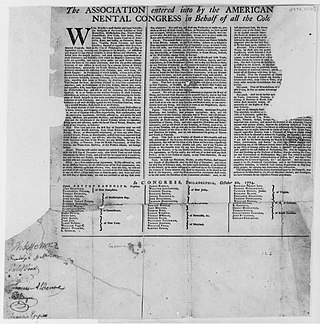
The Continental Association, also known as the Articles of Association or simply the Association, was an agreement among the American colonies adopted by the First Continental Congress in Philadelphia on October 20, 1774. It was a result of the escalating American Revolution and called for a trade boycott against British merchants by the colonies. Congress hoped that placing economic sanctions on British imports and exports would pressure Parliament into addressing the colonies' grievances, especially repealing the Intolerable Acts, which were strongly opposed by the colonies.

The First Continental Congress was a meeting of delegates of 12 of the Thirteen Colonies held from September 5 to October 26, 1774 at Carpenters' Hall in Philadelphia at the beginning of the American Revolution. The meeting was organized by the delegates after the British Navy implemented a blockade of Boston Harbor and the Parliament of Great Britain passed the punitive Intolerable Acts in response to the Boston Tea Party.
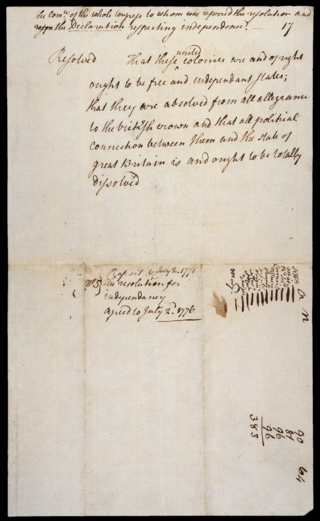
The Lee Resolution, also known as "The Resolution for Independence", was the formal assertion passed by the Second Continental Congress on July 2, 1776, which resolved that the Thirteen Colonies, then referred to as the United Colonies, were "free and independent States" and separate from the British Empire, which created what became the United States. News of this act was published that evening in The Pennsylvania Evening Post and the next day in The Pennsylvania Gazette. The Declaration of Independence, which officially announced and explained the case for independence, was approved two days later, on July 4, 1776.

The United States House of Representatives, commonly known as the lower chamber of the United States Congress, along with the United States Senate, commonly known as the upper chamber, are the two parts of the legislative branch of the federal government of the United States. Like its counterpart, the House was established by the United States Constitution and convened for its first meeting on March 4, 1789, at Federal Hall in New York City. The history of this institution begins several years prior to that date, at the dawn of the American Revolutionary War.

The Congress of the Confederation, or the Confederation Congress, formally referred to as the United States in Congress Assembled, was the governing body of the United States from March 1, 1781, until March 3, 1789, during the Confederation period. A unicameral body with legislative and executive function, it was composed of delegates appointed by the legislatures of the several states. Each state delegation had one vote. The Congress was created by the Articles of Confederation and Perpetual Union upon its ratification in 1781, formally replacing the Second Continental Congress.

Pennsylvania was the site of many key events associated with the American Revolution and American Revolutionary War. The city of Philadelphia, then capital of the Thirteen Colonies and the largest city in the colonies, was a gathering place for the Founding Fathers who discussed, debated, developed, and ultimately implemented many of the acts, including signing the Declaration of Independence, that inspired and launched the revolution and the quest for independence from the British Empire.

The Perpetual Union is a feature of the Articles of Confederation and Perpetual Union, which established the United States of America as a political entity and, under later constitutional law, means that U.S. states are not permitted to withdraw from the Union.

The Confederation period was the era of the United States' history in the 1780s after the American Revolution and prior to the ratification of the United States Constitution. In 1781, the United States ratified the Articles of Confederation and Perpetual Union and prevailed in the Battle of Yorktown, the last major land battle between British and American Continental forces in the American Revolutionary War. American independence was confirmed with the 1783 signing of the Treaty of Paris. The fledgling United States faced several challenges, many of which stemmed from the lack of an effective central government and unified political culture. The period ended in 1789 following the ratification of the United States Constitution, which established a new, more effective, federal government.
The former Court of Appeals in Cases of Capture, established by resolution of the Continental Congress on January 15, 1780, was the first federal court in the United States. The court had jurisdiction over cases for the capture of enemy ships and cargo.

Passport Act of 1782 was enacted by the Congress of the Confederation on February 11, 1782. The Act was recorded in the twenty-second volume of the Journals of the Continental Congress. The passport article was a letter from Thomas Smith of Virginia to George Clymer, Samuel Osgood, and James Madison regarding the nautical trade between tobacco colonies. The Act of Congress states safe passage for the Commonwealth of Virginia traders capitulants seeking to transport tobacco from Yorktown, Virginia to New York.
The Augusta Declaration, or the Memorial of Augusta County Committee, May 10, 1776, was a statement presented to the Fifth Virginia Convention in Williamsburg, Virginia on May 10, 1776. The Declaration announced the necessity of the Thirteen Colonies to form a permanent and independent union of states and national government separate from Great Britain, with whom the Colonies were at war.
